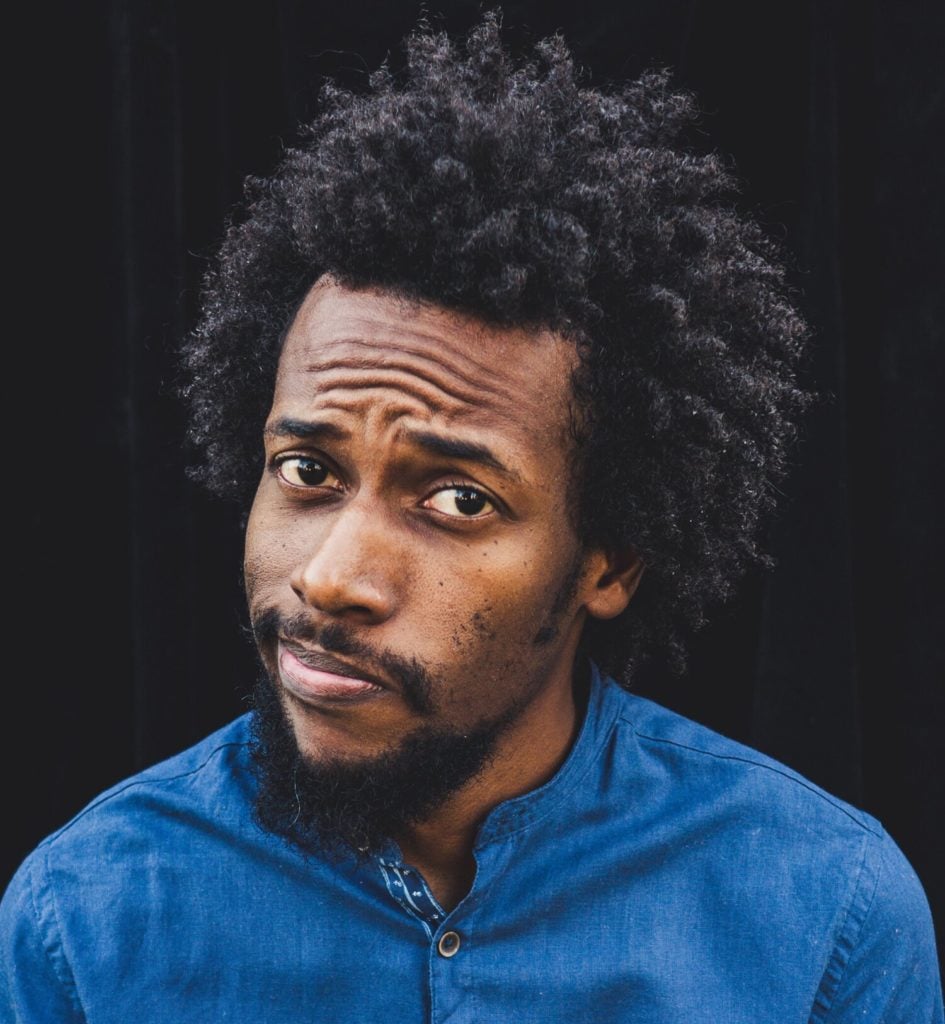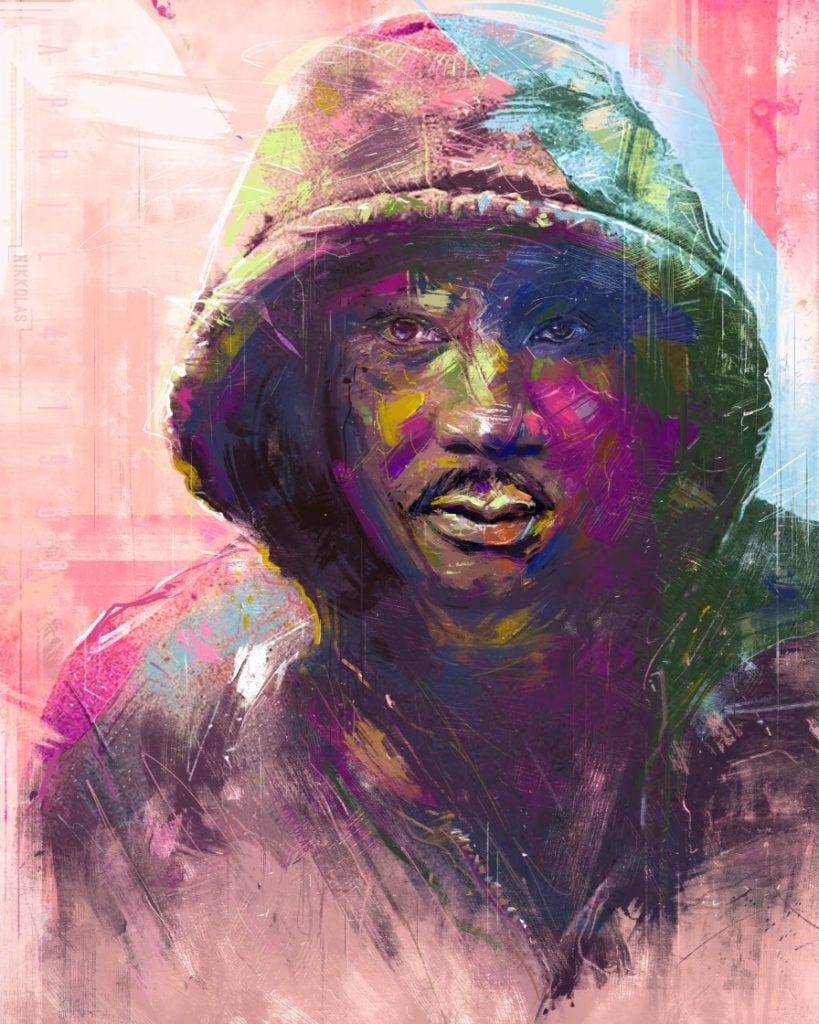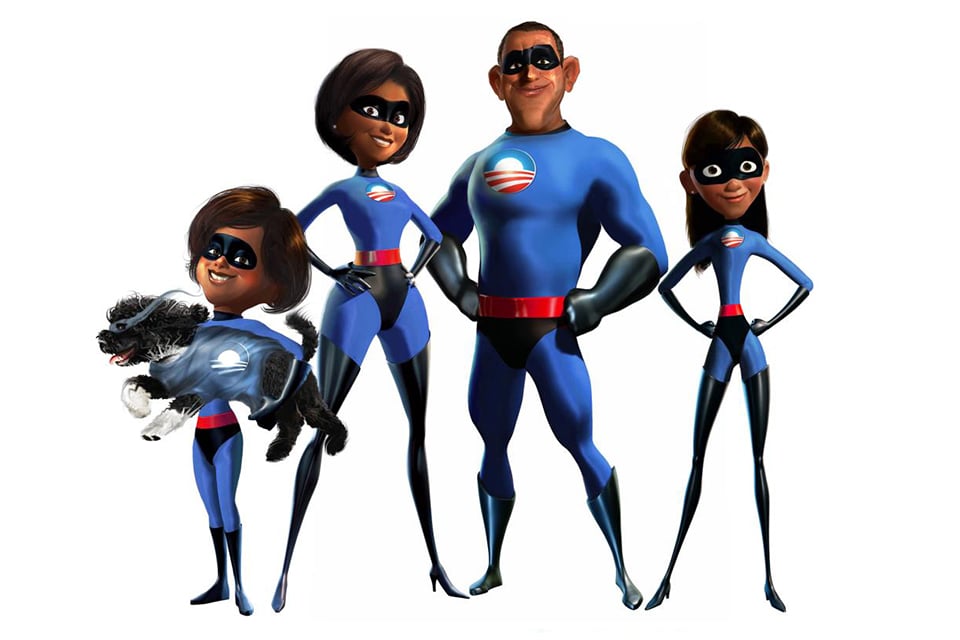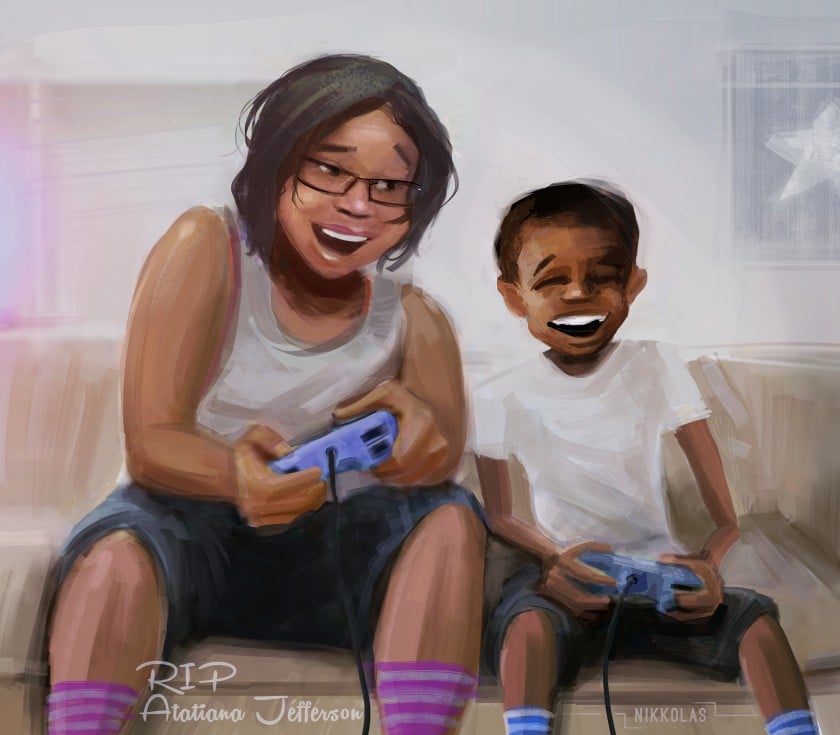Politics
‘My Art Is a Superpower That Allows People to Grieve’: Artist Nikkolas Smith on Painting Ahmaud Arbery and Other Victims of Injustice
The artist has previously depicted Martin Luther King Jr. and Atatiana Jefferson.

The artist has previously depicted Martin Luther King Jr. and Atatiana Jefferson.

Sarah Cascone

Like many, artist Nikkolas Smith was horrified when he first saw the footage of the killing of Ahmaud Arbery, the 25-year-old black man who was gunned down by two white men while jogging in his Georgia neighborhood on February 23.
But more than just echoing the outraged calls for justice, Smith turned to his art, creating a moving tribute to Arbery and sharing it on social media.
“Today I will not draw joy,” he wrote in the Instagram caption accompanying the raw, sketchy portrait of Arbery wearing a black suit and bow-tie. “Today I draw Pain. Today I sketch Injustice.” Over the past five days, the image has amassed nearly 64,000 likes.
The Los Angeles artist has a knack for responding to major cultural moments, and for addressing issues of social justice, particularly racial disparities, through his art.
On Thursday, following the widespread dissemination of video footage of Arbery’s death and the subsequent public outcry, Travis McMichael, 34, and his father, Gregory McMichael, 64, were charged with murder and aggravated assault. The two men claimed they armed themselves and chased down Arbery because they believed he was a burglary suspect.
We spoke with Smith over email about his work and its relationship to activism.
How do you feel about the strong response you received for your portrait of Arbery?
The response to my Ahmaud art has been overwhelming and humbling. It has become the most viral art piece I’ve posted to Instagram. I’ve received so many messages that say that I’ve painted what people are unable to say, and that my art is a superpower that allows people to process and grieve during highly emotional moments of injustice.
While I wish I didn’t have to create so many artivist pieces related to death, it makes me feel empowered that my art can be a therapeutic tool for so many people—it causes people to think and talk about issues that are often very uncomfortable to deal with.

Nikkolas Smith depicts Martin Luther King Jr. in a hoodie as a tribute to Trayvon Martin. Courtesy of Nikkolas Smith.
How did you first come to hear of Arbery’s death and what motivated you to create the piece and depict him as you did?
I first saw the unthinkable murder of Ahmaud when it was posted [on Twitter] by Shaun King [a writer and civil rights activist]. For a day or two, I couldn’t bring myself to create anything related to this tragedy, but the more time passed, the more hurt and sadness I felt, along with many people in the black community and around the world. When these unjust murders occur, the pain I feel will often motivate me to create a visual response.
What is your artistic process like and what tools and materials do you use?
My style of art is what I would call unfinished, painterly, semi-abstract, and expressive. I mainly create digital paintings in Photoshop, using my Wacom Intuos tablet. I give myself anywhere from 30 minutes to three hours every Sunday and just speed paint what I’m feeling.

Nikkolas Smith depicted the Obamas as the superhero family from Pixar’s The Incredibles. Courtesy of Nikkolas Smith.
Do you normally make several drafts before finalizing a composition?
Nope. I just jump into speed painting with a sort of addition-subtraction method of adding paint strokes, and continue to refine as I go along, oftentimes using just one single layer in Photoshop.
When did you first realize that art could be a tool for activism?
About seven years ago, I created an art piece of Martin Luther King Jr. in a hoodie, in response to the unjust murder of Trayvon Martin. It quickly became the most viral piece I had ever created at the time, and the next day I was being interviewed live on CNN, explaining the meaning of the art and how it was linked to Dr. King’s ideal of not being judged by your outward appearance. That was the moment I realized how universally impactful activist art can be to inspire people to make a positive change in the world.

Nikkolas Smith made a painting of Atatiana Jefferson and her nephew, capturing the moment before she was killed by police responding to a non-emergency response call at her home. Courtesy of Nikkolas Smith.
Are there specific moments where you feel like you have had an important impact through your work?
My most viral art of 2019 was my recreation of Atatiana Jefferson’s final joyful moment of life, playing video games with her nephew, before being inexcusably murdered by the police in her own home. To my surprise, Congressman Marc Veasey blew up the art to poster size and displayed it on the floor of Congress as he was passionately advocating for police conduct reform. This was a moment I never could’ve imagined, that my art would be used in such a monumental way.
Throughout the years, creating art of a Syrian child in Aleppo, children in immigration camps, families seeking asylum, or NFL players kneeling against police brutality, I have been honored to be a part of helping to raise awareness and funds for issues that I never thought I would be able to advocate for. It has truly shown me the power of art to help people see the world through another human being’s eyes.